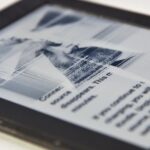They’re finally here. Apple announced three new iPhone models at their “Gather Round” event in Cupertino, and they’re all absolutely gorgeous phones. With bezel-less screens and polished titanium edges, the iPhone XS, XS Max, and XR are truly marvels of engineering — but perhaps the most impressive design feat Apple pulled off is the fact that two of these models are rated IP68 under the IEC standard 60529.
The two that earned the higher IP68 rating are the iPhone XS and iPhone XS Max. The iPhone XR, on the other hand, is IP67 water-resistant.
First, let’s talk about IEC 60529. It’s simply a standard published by the National Electrical Manufacturers Association — in short, a test that checks how well a device resists the elements. After a device is put to this test, it gets an IP rating for dust and water resistance. Quoting the standard:
This standard describes a system for classifying the degrees of protection provided by enclosures of electrical equipment for two conditions: 1) the protection of persons against access to hazardous parts and protection of equipment against the ingress of solid foreign objects and 2) the ingress of water. The degree of protection against these two conditions is designated by an IP Code.
The “IP Code” mentioned above technically stands for “International Protection Marking,” but it has colloquially come to mean “Ingress Protection.” To put it simply, it signifies how well a device is protected against elements like water and dust.
But the interesting part is how the numbers that come after the “IP” prefix are actually two separate ratings. One tells you how well the device can guard against dust and solids, and the other shows you how well it can prevent water from entering the main enclosure. In other words, the first number signifies a device’s “dust-proof” rating and the second tells you how water resistant it is.
All three of Apple’s newest phones earned an IP68 rating. This means that they are water-resistant, but not waterproof. But it’s actually one of the highest scores for a smartphone to date, so let’s break it all down:
- IP: This stands for “Ingress Protection,” the rating system for the dust- and water-resistance of electronic devices.
- 6: This number signifies the dust protection rating. In the case of the iPhone XS, XS Max, and XR, “6” means the phones are entirely dustproof.
- 8: This number is the water resistance rating. An “8” here means that the new iPhone models can be fully submerged in water as deep as two meters for a period of up to 30 minutes.
Ultimately, this means that the new iPhones should survive if you spilled your drink on them, dropped them in the toilet, or even if you stood outside in a rainstorm. But other factors, such as wear and tear or things like chlorine or salt being dissolved in the water, mean you should still be careful.
The IP rating only tells you how well a device protects against water and dust, but it doesn’t factor in chemicals or particulates that may be dissolved in said water. If you drop your phone in a pool or in the ocean, saltwater and chlorine can damage your phone’s finish and even corrode the rubber seals that make the IP68 rating on the new iPhone models possible. So to be on the safe side, you still shouldn’t take your phone swimming, as ensuing damage will probably not be covered.
Speaking of warranty coverage, Apple makes it clear in the fine print that they won’t cover any water or dust damage. Citing the fact that the water-resistant seals on the new iPhone models may fail due to normal wear, they state that liquid damage will not be covered under warranty, in no uncertain terms.
Phone XS and iPhone XS Max are splash, water, and dust resistant and were tested under controlled laboratory conditions with a rating of IP68 under IEC standard 60529 (maximum depth of 2 meters up to 30 minutes). Splash, water, and dust resistance are not permanent conditions and resistance might decrease as a result of normal wear. Do not attempt to charge a wet iPhone; refer to the user guide for cleaning and drying instructions. Liquid damage not covered under warranty.
Another important note in that statement is how Apple has explicitly stated that you shouldn’t charge your iPhone XS, XS Max, or XR while it’s wet. Sure, it’s common sense, but it’s something to keep in mind.
So you can rest a bit easier knowing that your next iPhone will withstand a few splashes and even complete submersion in most situations. But in the end, you should still be careful to avoid testing the limits of that IP68 certification.
- Follow Gadget Hacks on Facebook, Twitter, YouTube, and Flipboard
- Sign up for Gadget Hacks’ daily newsletter or weekly Android and iOS updates
- Follow WonderHowTo on Facebook, Twitter, Pinterest, and Flipboard
Just updated your iPhone? You’ll find new emoji, enhanced security, podcast transcripts, Apple Cash virtual numbers, and other useful features. There are even new additions hidden within Safari. Find out what’s new and changed on your iPhone with the iOS 17.4 update.
“Hey there, just a heads-up: We’re part of the Amazon affiliate program, so when you buy through links on our site, we may earn a small commission. But don’t worry, it doesn’t cost you anything extra and helps us keep the lights on. Thanks for your support!”











